Hwagae Market, Hadong County, South Korea
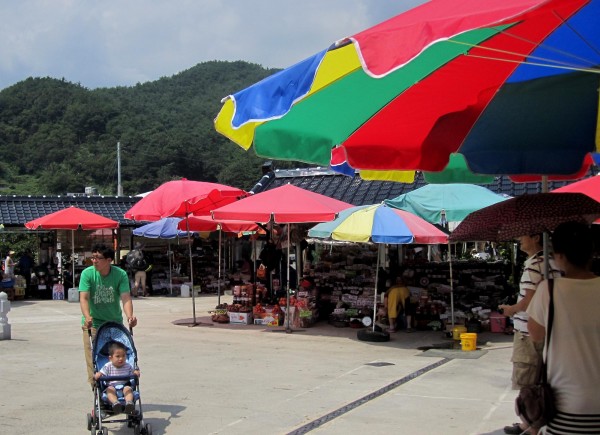
Hwagae Village is located in the heart of the Hadong County tea growing region of Gyeongsangnam do (nam means south, do means province) at the southern tip of the Korean peninsula. Most of the tea is wild-grown on Jiri Mountain surrounded by bamboo groves. In the centre of this village is Hwagae Market, a colourful bazaar of produce, plants, household goods and most importantly for me, locally-crafted tea ware.
I’m a relaxed shopper. I’m used to dawdling. I like to compare prices and look thoughtfully at the way a product is made. Sometimes I’m just happy to examine closely, anything that is unfamiliar and alluring. On this hot August day (it was 44°C or 111°F) my experience would be abbreviated. This should have been a languid stroll through Hwagae Market, but it was my last hour in town. We would be leaving soon to catch the bus to Boseong. Having spent 5 days surrounded by tea hills and immersed in Korean tea culture, I was determined to buy some local tea ware to use with the lovely Korean tea that I had acquired. This buying spree would have to be quick and focussed. Along the way though, I managed to take a few pictures.
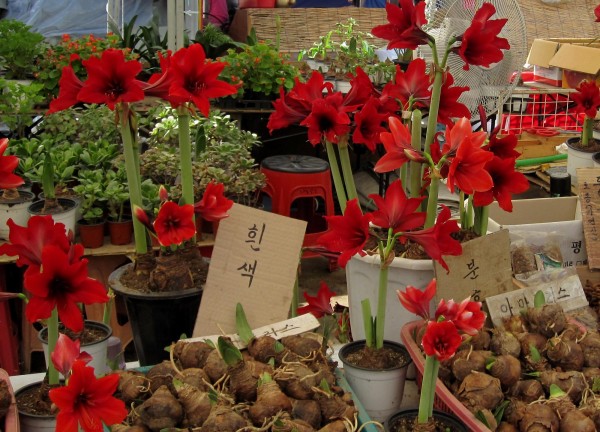
Market sellers of all ages peddle herbs, fungi, concoctions and wares, most harvested or crafted from raw materials provided by the mountain range.
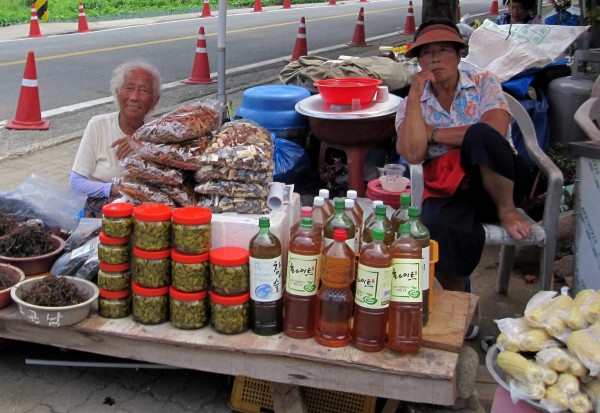
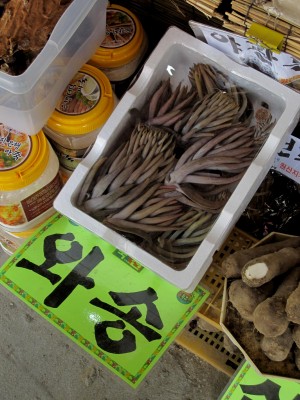
Our friend Cho, Yun Seok of Jukro Tea was guiding us through the market.. He knew the area well, having grown up in the village, so thankfully he could steer me directly to the tea ware I so longed to purchase. I resisted my normal ambling style and followed him on the hunt.



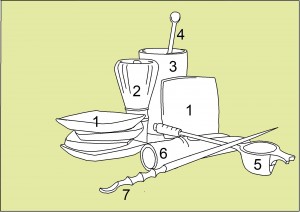
1,000 Korean Won was worth a little over 90 cents US when I was there in August and is holding the same value now. Most items were reasonably priced considering that they were hand made. I found saucers, a bamboo tea implement holder made by the shop owner’s husband, matcha spoon and whisk, tea scoop, strainer and tea pick. I bought a place mat woven with rice fibre, but when we got it back to the apartment in Bucheon we discovered that it was crawling with little mites. Knowing they wouldn’t enhance my tea experience in any way, I chose to leave them and the mat behind.
Part II – my quest for a rustic, folk-inspired Korean ceramic tea set.



